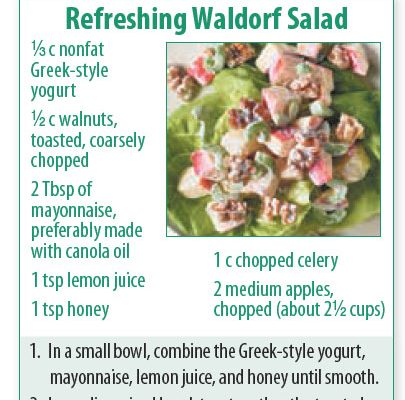Celebrate Celery!
The Folklore. Celery has hit celeb status in the veggie world. No longer the passed-over crudité, or mere Bloody Mary stirring stick, celery is a social media phenom, so wildly popular, it’s selling out in stores. Credit celery juice for the trending promises of everything from weight loss and mental clarity to disease cure. Historically, celery, which traces back to the Mediterranean 1,000 BC, has been used medicinally (digestion, colds, water retention) by the ancients, as awards for Greek athletes, and as food. Hype aside, celery is a nutrient and antioxidant-rich, low-calorie vegetable with research-based health benefits.
The Facts. Kin to parsley, carrots, dill, and cilantro, the type of celery (Apium graveolens var. dulce) most common in the U.S. belongs to the Pascal family, with large, firm stalks that are pale to deeper green and leafy ends. There are several varieties in different hues (shades of gold and red), stalk size and tenderness, and flavor. Celery root, or celeriac (var. rapaceium) and smallage, or Chinese celery (var. secalinum), are closely related to celery. With just 18 calories, one serving (about two medium stalks) of celery packs 40% DV (Daily Value, based on 2,000 calories/day) of bone-protective vitamin K and 10% DV of vitamin A, which supports eye health.
The Findings. A rich source of several antioxidant plant compounds, like caffeic acid, apignin, and kaempferol, celery is an active protector against free radicals. The diversity of these compounds has synergistic healing abilities (Journal of Evidence-Based Complementary & Alternative Medicine, 2017). In addition, celery is an excellent source of vitamins and nutrients that contribute to its antibacterial and anti-inflammatory activitiy, and the lowering of blood-glucose and cholesterol (Critical Reviews in Biotechnology, 2018).
The Finer Points. Select celery that is firm, crisp, with tight stalks, no blemishes, and pale to bright green healthy-looking leaves. Organically grown celery is best to reduce exposure to contaminants such as pesticides. Store unwashed stalks in airtight plastic bags where they’ll keep fresh and retain beneficial plant compounds for a week. To prepare, cut off the base and leaves and rinse under running water. Cut, chopped, or diced stalks enliven tuna and chicken salad, green and fruit salads—try the classic Waldorf salad—and they are terrific in savory stuffing, soup, and chowder. And don’t forget the highly nutritious leaves—they make wonderful pesto and are a clever green garnish to most any dish.

—Lori Zanteson
The post Celebrate Celery! appeared first on University Health News.


